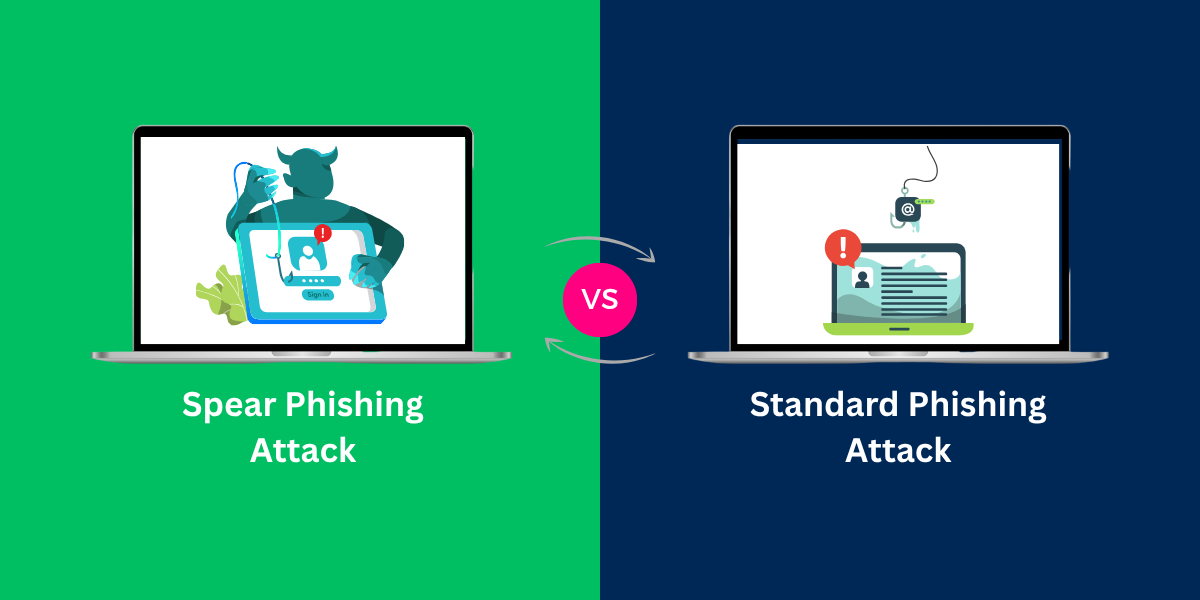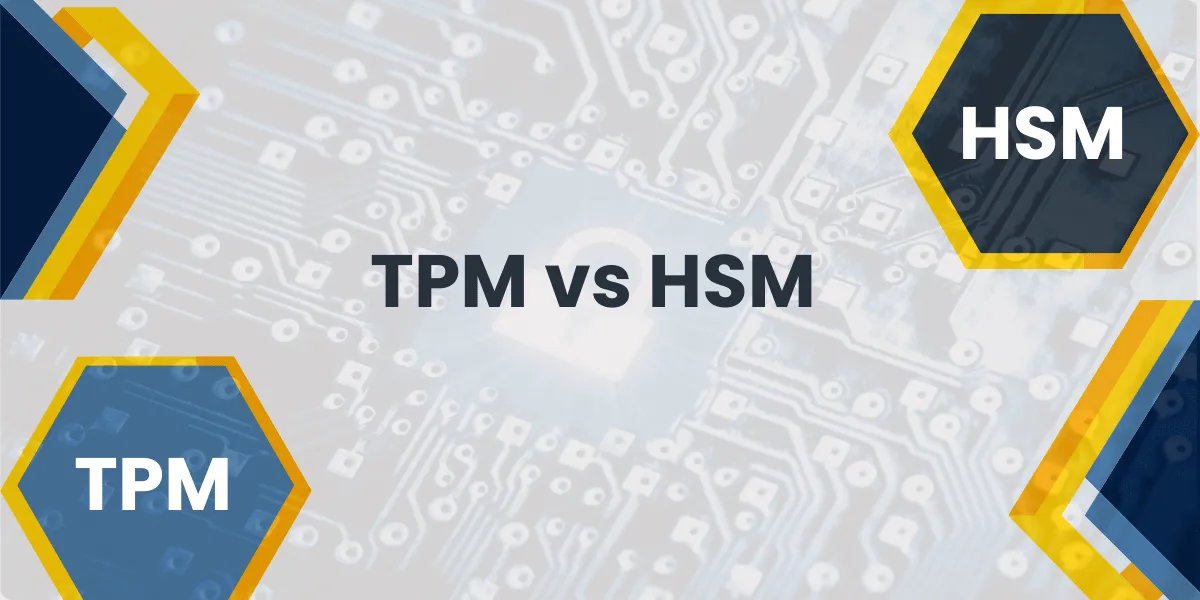Spear phishing and phishing attacks represent two distinct forms of email-based cyber threats. Phishing attacks distribute numerous deceptive emails to random recipients in order to obtain their data. Spear phishing attacks specifically target particular people or businesses through emails that contain information about the intended victim. The targeted nature of spear phishing attacks makes them more successful and more difficult to identify than traditional phishing attempts. Attackers employ spear phishing to obtain access to sensitive information and bank accounts and company networks. The main difference between Spear Phishing vs Phishing attack lies in their approach since spear phishing uses personal information to create more believable attacks while phishing uses general deceptive messages.
What is Spear Phishing?
Spear phishing is a targeted cyber-attack where criminals send emails that appear to come from trusted sources. These attackers research their victims and use personal information to make emails look legitimate. The goal is to steal sensitive data, login credentials, or money.
Unlike regular phishing that sends mass emails, spear phishing focuses on specific individuals or organizations. Attackers often impersonate bosses, colleagues, or known business partners. They create urgent scenarios to make victims act quickly without thinking.
Common tactics include fake invoices, password reset requests, or messages about security threats. The success rate of spear phishing is higher than regular phishing attacks.
The attackers use spear phishing to launch targeted cyberattacks by researching specific people or organizations to create customized deceptive messages. 65% of successful phishing attacks in 2024 are attributed to spear phishing.
Characteristics of Spear Phishing:
- The attackers use personalized messages which include the target’s name along with their job title and company information.
- The attackers conduct thorough research of their targets through social media and professional networks.
- The attackers use context-specific content which includes references to recent events and colleagues and projects.
- The attack succeeds at a higher rate because it appears genuine.
- The attackers need to spend considerable time and effort for this attack to succeed.
What is Standard Phishing Attack?
Standard phishing is a cyber-attack where criminals send fake emails or messages that look like they come from real companies. These attackers pretend to be banks, online stores, or social media platforms. They ask users to click links or download files that steal personal information like passwords, credit card numbers, and bank details.
Phishing emails often create urgency, claiming account problems or special offers. They use copied logos and similar web addresses to trick people.
Most phishing attempts reach victims through email, but some use text messages or social media. Users must check sender addresses and avoid clicking suspicious links.
Characteristics of Standard Phishing:
- The messages contain general content which aims at reaching wide groups of people.
- The attackers send their messages to large email lists and social media platforms.
- The attackers use standard social engineering tactics which include fake account verification requests and fake prize notifications.
- The attackers achieve low success rates through their high volume of attacks.
- The attackers need to conduct little to no research on their targets.
Spear Phishing vs Phishing Attack: Direct Comparison
| Factor | Spear Phishing | Standard Phishing Attack |
| Target Selection | Specific individuals/organizations | Random, mass audience |
| Message Personalization | Highly personalized and contextual | Generic, one-size-fits-all |
| Research Required | Extensive background research | Minimal to none |
| Success Rate | 10% – 20% | 0.1% – 3% |
| Volume | Dozens to hundreds | Millions of messages |
| Cost to Execute | Moderate to high | Very low |
| Detection Difficulty | Much harder to detect | Easier to detect |
| Impact per Attack | Higher individual impact | Lower individual impact |
Spear Phishing Example
Subject: Q4 Budget Review - Action Required Hi Sarah, Following our discussion in yesterday's board meeting about the Q4 budget concerns, I need you to review the attached financial projections before our 2 PM call with the CFO. Best regards, Mike Thompson, VP Finance [Malicious Attachment]
Standard Phishing Example
Subject: Urgent: Your Account Will Be Suspended
Dear Customer,
Your account has been compromised. Click here immediately to verify your identity or your account will be suspended within 24 hours.
[Suspicious Link]
Security Team
Spear Phishing and Phishing Attack Statistics
- Phishing is accountable for 41% of all cyber incidents
- A mere less than 0.1% of all emails consist of spear-phishing mail; however, these account for 66% of all data breaches.
- An attempt was made on 50 large organizations with spear phishing emails in 2022 where they received up to five spears each day
- AI-driven, advanced spear phishing attacks have a 23% higher success rate among C-level executives than other employees
- In fact, the executives falling within C-level tolerance bands fell an extra 57 percent exposure to aimed spear phishing.
Spear Phishing Detection:
- Advanced threat protection with behavioral analysis
- User training focused on social engineering awareness
- Verification protocols for unusual requests
- Multi-factor authentication for sensitive actions
Standard Phishing Detection Strategies
- Most standard phishing attempts can be detected by automated email filters.
- The warning signs include urgent language, suspicious links, and grammar errors.
- The domain analysis shows clear spoofing attempts.
- Volume-based detection identifies mass campaigns.
Spear Phishing and Phishing Protection Best Practices
For Companies:
- EMail security gateways, with the latest cutting-edge threats prevention mechanisms.
- Introduction of [Domain-Based Email Authentication](DMARC) protocols in your ecosystem.
- Sandboxing security analysis for email attachments.
- Introduction of Zero Trust Architecture security measures to counter potential attacks inside the networks.
- Scheduled phishing awareness training, with emphasis on spear-phishing.
- The rules defining how to, and when to report a suspicious communication or a potential incident.
- Examine concurrence of request along other parameters to validate the principal to the request or the data through another authentication means.
- Regulate individual use of social networks to prevent leakage of information to those who are not supposed to view it.
For Individuals:
- Contact with the client should be used for non-standard requests.
- Request warning signs involve multi-channels in order to establish authenticity
- Any unexpected correspondence should be treated with caution if they appear vital
- Be guarded with any links or attachments before clicking or opening anything
Cost and Business Impact of Standard Phishing vs Spear Phishing
Financial Impact Comparison:
| Attack Type | Average Cost per Incident | Recovery Time | Business Disruption |
| Standard Phishing | $1.2 million | 2-4 weeks | Moderate |
| Spear Phishing | $4.9 million | 6-12 weeks | Severe |
Final Thoughts
The distinction between spear phishing and phishing attacks requires understanding for organizations to establish effective cybersecurity defenses. Standard phishing attacks depend on mass targeting with generic methods yet spear phishing attacks succeed through precise targeting and personalized approaches. Organizations need to establish multiple security measures which defend against both types of attacks while focusing on the advanced social engineering methods used in spear phishing attacks.
The protection of organizations depends on uniting advanced technical security measures with thorough user training and implementing verification systems for sensitive requests and maintaining continuous awareness about evolving sophisticated targeting techniques.
Frequently Asked Questions (FAQs)
How do spear phishing attacks differ from standard phishing attacks?
Spear phishing attacks have personalized messages aimed at individuals or specific companies. This type of attack uses real names, job titles, and company details to seem as legitimate as possible. On the other hand, standard phishing attacks with poor emails are sent to a large number of random recipients.
What makes spear phishing more dangerous than regular phishing?
Spear phishing attacks have higher success rates because they use accurate personal information. The attackers research their targets extensively and craft believable messages. Recipients often trust these personalized messages more than generic phishing attempts.
Can spear phishing attacks target entire organizations?
Multiple employees within one organization could get targeted during a time with spear phishing. Attackers usually focus on exploiting certain departments, say finance, or HR. In this way, a prepared and coordinated attack can exploit a company through multiple doors.
How long does it take cybercriminals to prepare a spear phishing attack?
Just how many days are needed by cyber criminals to prepare a spear phishing attack? Research on a target victim for a Spear Phishing Attack would take anywhere between 2-3 weeks. The preparation includes data as in social media related information and professional information and the information related to a company. This comes later useful to prepare very convincing fake messages.
Are spear phishing attacks increasing compared to regular phishing?
By 2022, spear phishing attacks have gone up by 65% as compared to 2021; that is much more accurate about the report that most organizations have even seen more targeting on executives and other finance-related staff. These kinds of regular phishing attacks are still in existence, but they are getting slower growths as compared to spear phishing.

Priya Mervana
 Verified Web Security Experts
Verified Web Security Experts
Priya Mervana is working at SSLInsights.com as a web security expert with over 10 years of experience writing about encryption, SSL certificates, and online privacy. She aims to make complex security topics easily understandable for everyday internet users.



